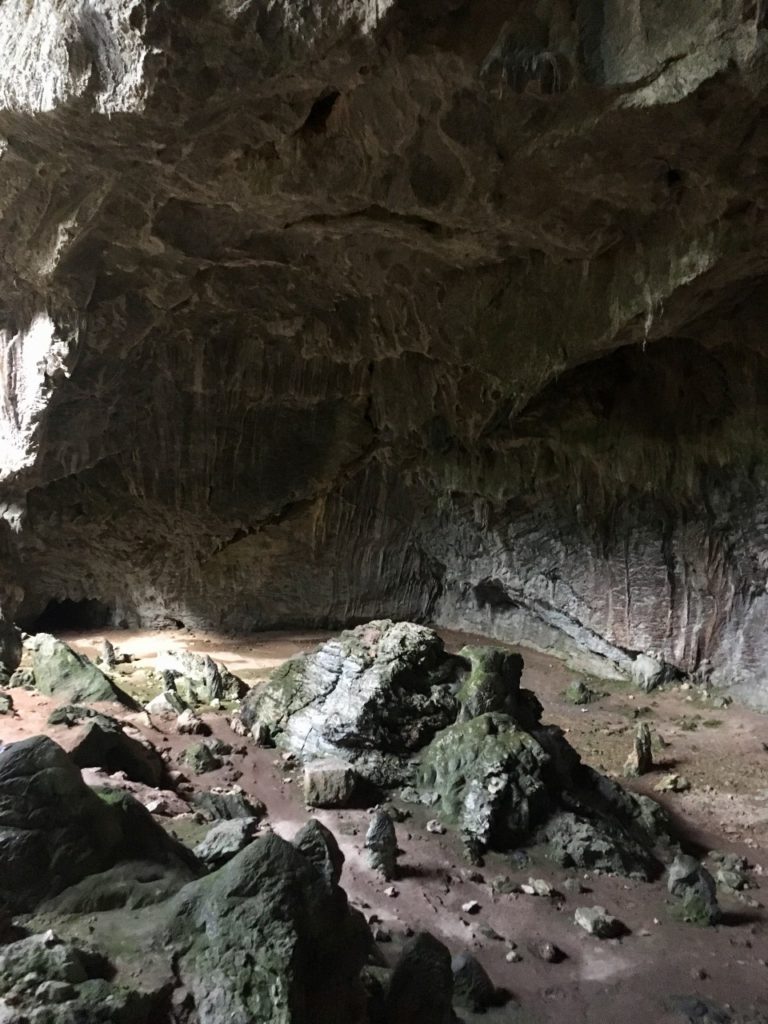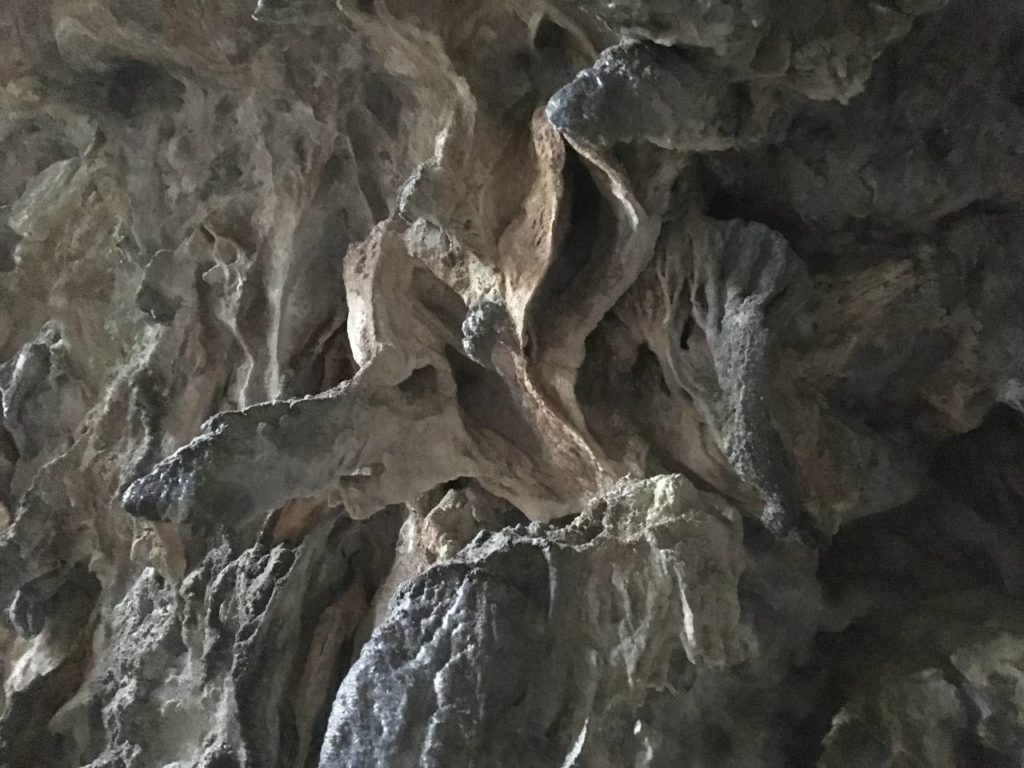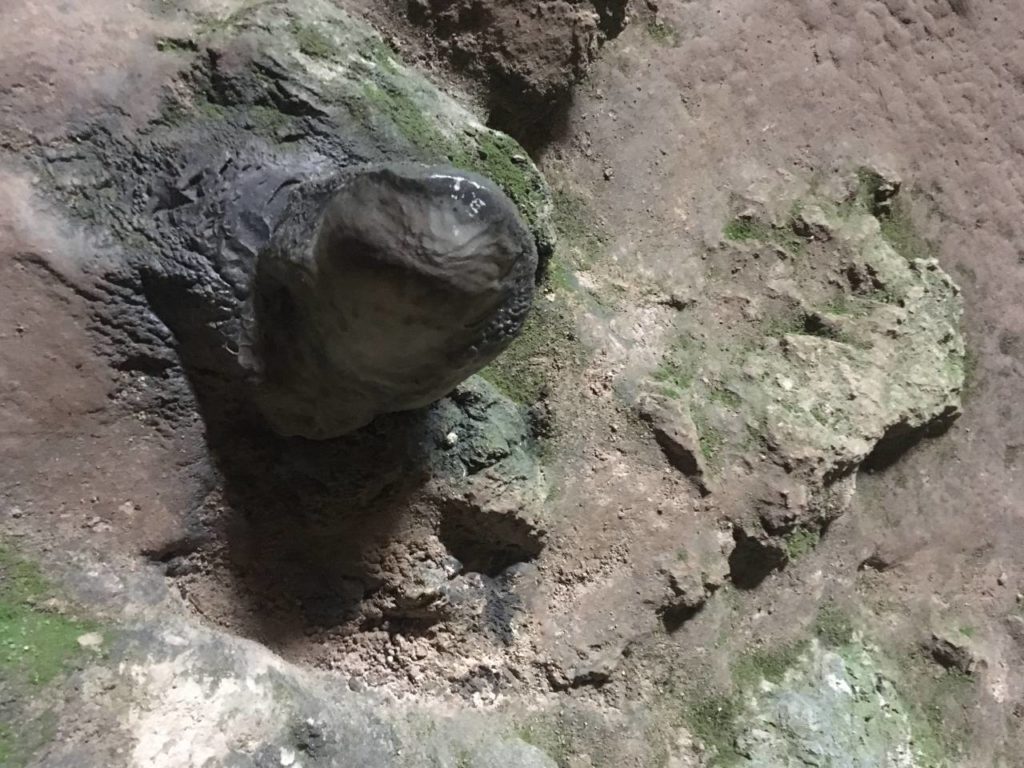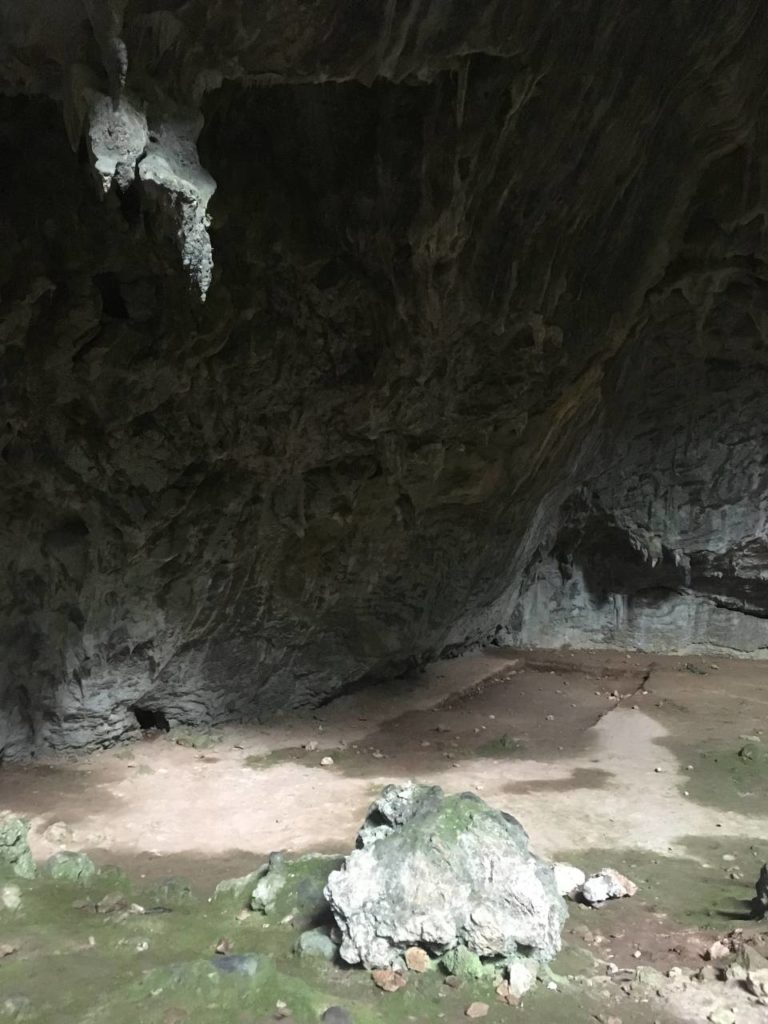Nimara Mağarası is a fascinating, Neolithic era cave near Marmaris, in southwest Turkey. Though close to home, I’d only fantasied about this tactile wonderland until recently, my partner and I acquired our own set of wheels. From the Marmaris bus garage, we took the Adaköy yolu all the way there. A straight, easy shot along a scenic route bursting with star- leaved sığla ağaçlar (sweetgum trees). Everything felt light and airy, something right out of a fairytale. This was quite the serene opposite from the buzzing streets on the northwest end of town.
After we passed the flashy yacht marina, we arrived at Cennet Adası a.k.a Heaven Island. This massive, nature reserve appeared to be yet untouched by the wrath of construction that has transformed most of Turkey’s natural landscapes. A short while later, we reached the highest point of the island where a park entrance would lead us to the prehistoric cave. We walked about 400 meters up an earthen path, until we reached a staircase on the right-hand side that took us directly down into the mouth of the cave. Instantly, we were blown-away by all the incredible textures pulsing in every direction.

These textures are living sculptures; so many of them resembled human and animal forms. Could this be nature’s way of interpreting the world around them? This place felt very much alive even though we couldn’t see every living thing. I’m certain the shadowed spaces were teeming with life; spiders and other insects watching us and wondering, who are these strange creatures and what are they doing here?
Despite its grand scale, the cave itself doesn’t go in very deep, so there’s relatively no fumbling around in the dark unless you venture into the far corners. This mysterious, new world was maximum sensory overload. Countless pockets and portals became more visible as my eyes adjusted to this semi-subterranean dimension.
Cave Architecture
Magnificent flowstones (sheet-like calcite deposits formed by water that flows down the walls of a cave) draped down from the walls and ceiling creating a cathedral of angelic forms that vibrated other-worldly energy. Stalactites mimicked icicles, while other strange, organic forms loomed overhead, quietly shapeshifting and growing heavier with time. Water dripped slowly and constantly from above making a soft echo throughout the cave.

The landscape of the cave floor is a world of its own with bizarre, sensual forms that glistened and glowed under veils of light that swept in between the trees outside. Stalagmites rising up from the ground shimmered with crystalized dust and some reflected the light with their wet, shiny skin. As the sun slowly shifted in the sky, more strange oddities were revealed. In some places, shallow pools harbored still waters evoking a meditative dreamscape. Few plants seemed able to grow in this dim environment, but I saw some resilient organisms drinking in the sunlight. The terrain was extremely clean, a detail I’ve repeatedly noticed inside other caves.
Cave History
To my surprise, there was no historical information posted near the site of the cave. My curiosity was reeling and left only to my imagination, I envisioned esoteric rituals taking place around the temple-like stones as a ceremonial fire burned at the heart of the cave. I did browse the internet before we came, but found very little data available in Turkish or English. What I learned was the Cult of Leto worshiped here, thanks to the research of Dr. Neşe Kırdemir, archeologist and past conservator of the Marmaris Museum. Leto was associated with the mother goddess religion of Anatolia. She was also the lover of Zeus and mother to twins, Artemis and Apollo.
In 1998, two sandstone sculptures of women were discovered inside the cave. The cave was then declared an archaeological site in 1999. Excavations began in and around the cave in 2000. Nimara Mağarası itself dates back 10,000 years and human activity within the cave is estimated as far back as some 12,000 years ago. Many historical artifacts were unearthed including vessels, colored glass beads, tools made of stone and bone, human terracotta figurines, and coins. Collaborative efforts between the Marmaris Museum, Muğla University, Muğla Ministry of Culture and Tourism, and the Marmaris Municipality made excavations and restorations of the cave possible. In 2007, Nimara Mağarası was officially open for tourism.

According to the excavations, the cave was once a place of pilgrimage. It was also used as a sanctuary or temple by the ancient people of Nimara whose settlement once existed on the south end of Marmaris. It was also determined that people lived in the cave at one time and that an area within the cave was once used a glass making studio.
Nimara Then and Now
In ancient times, caves were of great importance for humans; they were places of protection where people sought refuge. Many caves were also considered sacred spaces where people created sanctuaries and worshiped deities. Nimara Mağarası was apparently this such place where the power of belief transformed this natural structure into a spiritual chamber. What I’d like to know is, what is the true story of the cave? What types of ceremonies and rituals took place there? Why was this particular cave chosen for these sacred practices? Maybe the answers lie with Dr. Kırdemir or maybe they lie deeper within the cave.
Although Nimara Mağarası is considered a valuable, historical site, vandalism clearly shows the cave is not so well protected making it vulnerable to destruction. Since there are no visitor restrictions, people can enter and explore the cave at any time. My only hope is that visitors tread carefully and with respect for this magnificent, historical treasure.

Getting There
From the Marmaris otogar (bus garage), take the Yalancı Boğaz dolmuş/bus or hop in the car and follow the Adaköy yolu all the way until you reach the entrance marked Marmaris Milli Parkı. It’s about a 30-minute drive. Keep in mind, the time of day makes all the difference. I recommend going in the late afternoon, just before golden hour, so you can see more.
This article was originally published on May 5, 2021, by Marga Patterson.










